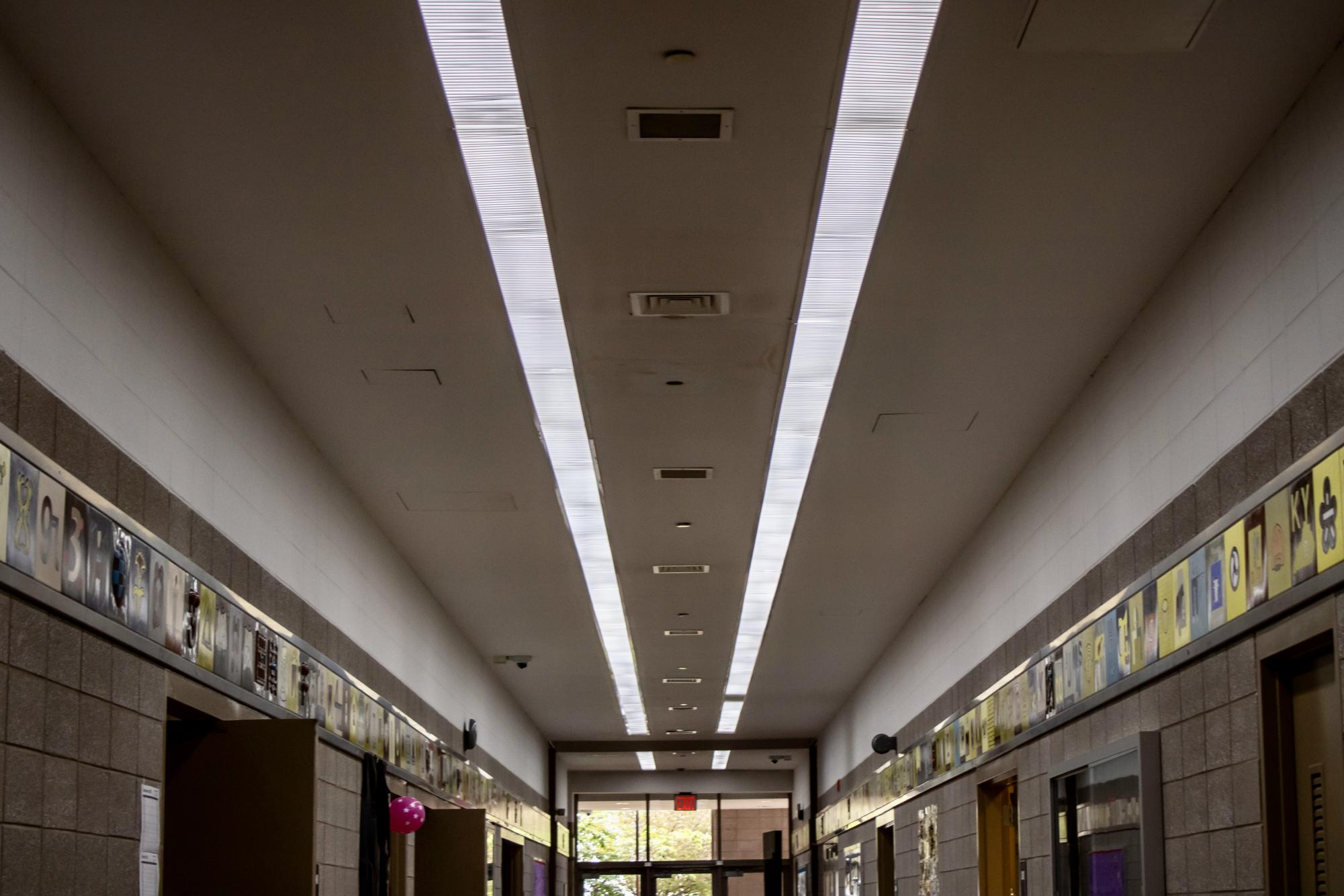
Beginning last week, the NYC Department of Citywide Administrative Services (DCAS), in conjunction with the NY Power Authority (NYPA), has begun installing LED lighting in Townsend Harris High School. This is part of a citywide project initiated by Mayor Eric Adam’s investment in school electrification, in order to combat climate change and develop the green workforce.
Reporters from The Classic attended the meeting between the school’s custodial management and representatives from DCAS, NYPA, and Willdan (the construction contractor) concerning the details of the project.
The installation of LED lights at THHS will contribute to energy efficiency and ecological friendliness, as they are typically brighter than other lighting solutions and produce less waste. The new lights and sensors are said to be highly adaptive to light — the row of lights near the window will dim during the day and become brighter as the natural light lessens. As people walk by, the sensors will also pick up movement and brighten the lights in hallways and stairwells.
Eight hundred schools are expected to have these LEDs installed by 2026. Townsend Harris is one of the first, according to DCAS Director of Operations Maria Ibrahim. It is amongst the 85 schools included in the first round of the initiative. So far, the only schools that the DCAS has completed are M625, Q137, and Q132 located in Manhattan and Queens. Assistant Principal Ellen Fee told The Classic that with these lights, “our energy efficiency score is likely to go up from a C to maybe even an A.”
The entire process should take around six to eight weeks, explained Ms. Ibrahim. The crew brought their materials into the building last week and have begun work on the sixth floor, arriving once all the students have exited the building. Science department teacher Joel Heitman said, “The lights on the sixth floor are almost completely done. The bulbs look the same but the brightness is overwhelming. It’s amazing, great; it makes you feel alive.” The crew will be working downwards from the sixth floor. They plan on completing the auditorium before the S!NG season goes into full gear.
The schools’ old fluorescent bulbs will be disposed into large barrels to ensure that the sulfur in the bulbs is discarded properly, and the NYPA will assist in making them recyclable and sharing them with other people.
Though the expected time period seems to be short, the construction is bound to affect students’ schedules once it is time for the lights in the gym to be fixed. “They’re going to use scaffolding in the gym for a whole day once a week and it may affect volleyball, badminton, and fencing schedules,” Ms. Fee said. It may also interfere with the physical education classes that use the room.
In regard to the issues involving the physical education classes, students feel that the pros of the situation are worth more than the cons. Junior Nafisa Matin said, “They should do it because it would look nicer and help conserve energy.”
Senior Stephanie Zhang said, “Even though the construction would affect phys ed classes, I think it is worthwhile given our energy efficiency score and the fact that switching to LED lights now would [address] it earlier [rather] than later. I think it’s kind of inevitable to change to more energy efficient sources, so might as well do it now.”
However, some on the badminton team said they are opposed to this plan and are concerned about how this decision will affect their performance. Senior Vincent Wynntar-Oo, who is on the team, said, “While the initiative would make the school energy efficient, the team and I strongly opposed the idea as it would take away much needed court time from the team. …It would be better to put off the project until the summer.”
Junior Apurbo Haider, also on the badminton team, said, “Gym time is already scarce from having to share the space with three other sports…It would negatively affect almost all four sports.”
Nonetheless, the scale of this plan makes it a significant step towards a more sustainable city, one run on a greener energy system.






